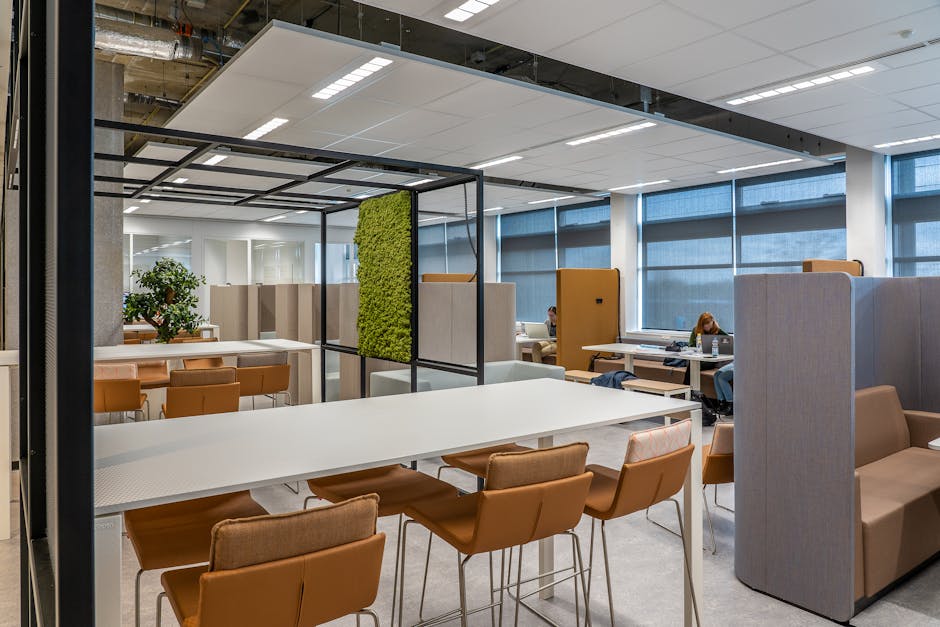The Hidden Benefits of In-Person Work: Why Face-to-Face Collaboration Still Matters
“While remote work has its merits, in-person collaboration offers unique benefits that can't be replicated virtually. This article explores the advantages of face-to-face interactions, from fostering creativity to building stronger team relationships, and why a balanced approach to work is crucial for organizational success. ”

In the wake of the global shift towards remote work, it's easy to overlook the significant benefits that in-person collaboration brings to the table. While flexibility and work-from-home options have become increasingly popular, there's a strong case to be made for the irreplaceable value of face-to-face interactions in the workplace. Let's explore why in-person work still matters and how it can positively impact both employees and organizations.
The Power of Physical Presence

One of the most compelling arguments for in-person work is the unparalleled power of physical presence. When colleagues share the same space, there's an immediate boost in energy and creativity that's difficult to replicate through a screen. The spontaneous exchange of ideas, the ability to read body language, and the ease of impromptu discussions all contribute to a more dynamic and productive work environment.
Enhanced Collaboration and Creativity
In-person interactions foster a level of collaboration that's challenging to achieve remotely. When team members are physically present, they can:
- Engage in real-time brainstorming sessions
- Sketch out ideas on whiteboards or flip charts
- Prototype concepts together
- Provide immediate feedback and iterate quickly
These collaborative activities often lead to innovative solutions and creative breakthroughs that might otherwise be missed in a virtual setting.
Stronger Team Bonds
Working side by side helps build stronger relationships among team members. The casual conversations by the water cooler, shared lunches, and after-work social activities all contribute to a sense of camaraderie and trust. These bonds are crucial for:
- Improving team cohesion
- Enhancing communication
- Fostering a positive company culture
Research has shown that teams with strong interpersonal connections are more likely to collaborate effectively and achieve better results.
The Mental Health Advantage
While remote work has its benefits, it can also lead to feelings of isolation and disconnection. In-person work provides valuable social interaction that is essential for mental well-being. Regular face-to-face contact with colleagues can:
- Reduce feelings of loneliness
- Provide a sense of belonging and purpose
- Offer opportunities for mentorship and support
These factors contribute significantly to employee satisfaction and overall mental health.
Clearer Work-Life Boundaries

One often overlooked benefit of in-person work is the clear delineation between work and personal life. When employees physically leave the office at the end of the day, it's easier to "switch off" and maintain a healthy work-life balance. This separation can lead to:
- Reduced stress and burnout
- Improved focus during work hours
- Better quality of personal time
Professional Development Opportunities
In-person work environments provide unique opportunities for professional growth that are harder to replicate in a remote setting. These include:
- Observing and learning from experienced colleagues
- Participating in hands-on training sessions
- Networking with peers and industry professionals
According to recent studies, employees who work in-office spend significantly more time on professional development activities compared to their remote counterparts.
The Power of Serendipitous Encounters
Chance meetings and informal conversations in the office can lead to unexpected collaborations, innovative ideas, and problem-solving breakthroughs. These serendipitous encounters are nearly impossible to replicate in a virtual environment and can be a significant driver of innovation and creativity within an organization.
Balancing In-Person and Remote Work
While the benefits of in-person work are clear, it's important to acknowledge that a balanced approach is often the most effective. Many organizations are adopting hybrid work models that combine the best of both worlds:
- Flexibility of remote work
- Collaborative advantages of in-person interactions
This approach allows employees to enjoy the benefits of working from home while still reaping the rewards of face-to-face collaboration.
Implementing Effective In-Person Strategies
To maximize the benefits of in-person work, organizations should focus on:
- Creating inviting and collaborative office spaces
- Encouraging team-building activities and social events
- Providing opportunities for cross-departmental interaction
- Ensuring the office environment supports both focused work and collaboration

Conclusion: The Enduring Value of Face-to-Face Work
While remote work has its place in the modern business landscape, the benefits of in-person collaboration remain undeniable. From enhanced creativity and stronger team bonds to improved mental health and professional development opportunities, face-to-face interactions continue to play a crucial role in organizational success.
As we move forward, the most successful companies will be those that find the right balance between remote flexibility and in-person collaboration. By recognizing and leveraging the unique advantages of face-to-face work, organizations can create a more dynamic, innovative, and engaged workforce ready to tackle the challenges of the future.